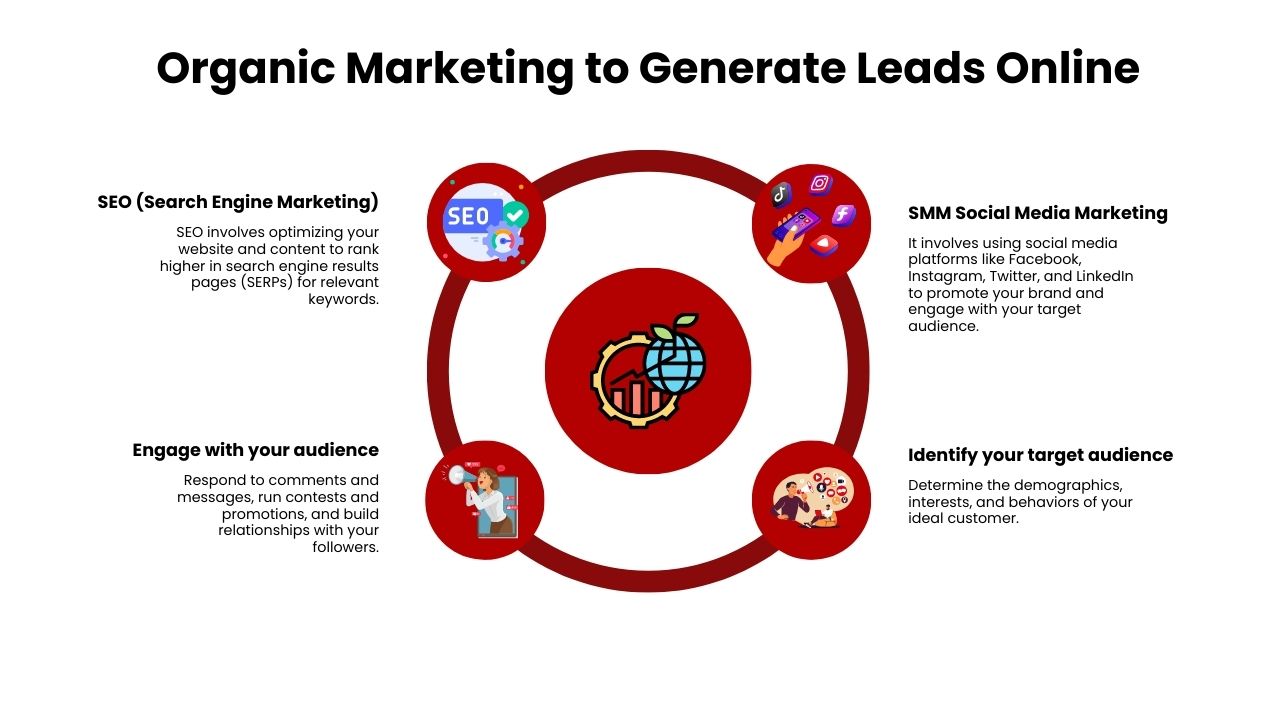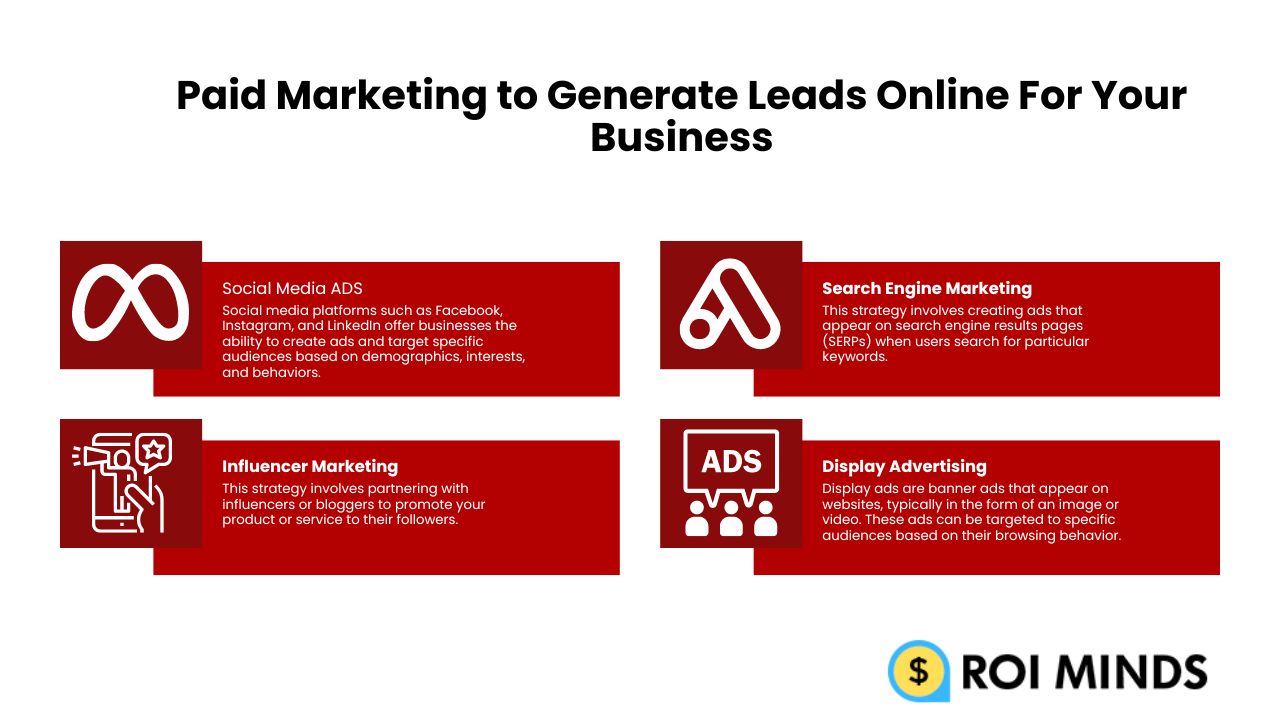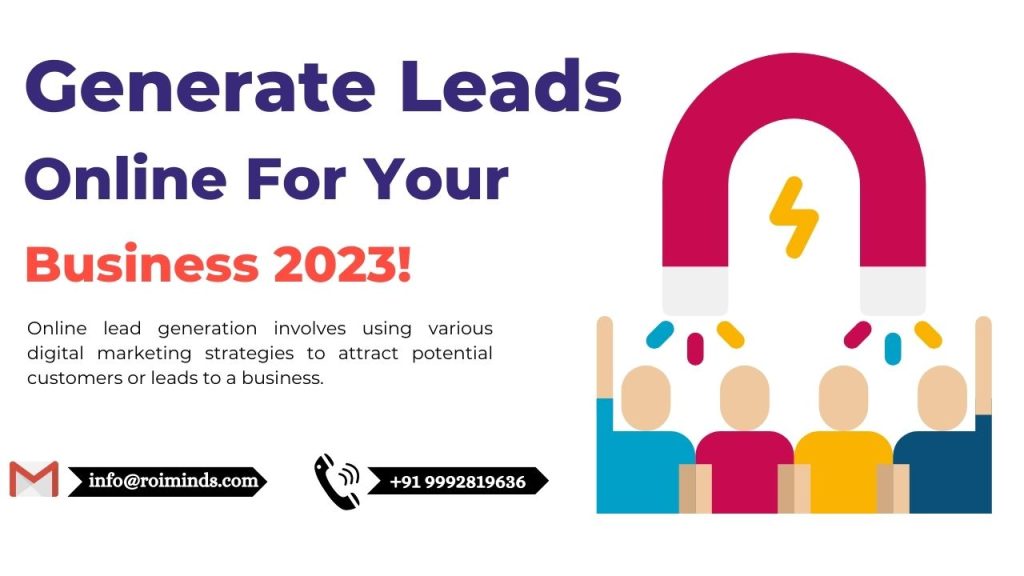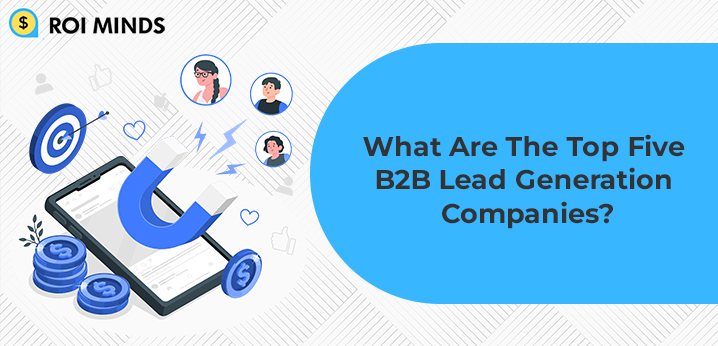Online lead generation involves using various digital marketing strategies to attract potential customers or leads to a business. These tactics may include search engine optimization (SEO), pay-per-click (PPC) advertising, social media marketing, content marketing, email marketing, and other digital channels.
The primary objective of online lead generation is to capture the contact information of potential customers, such as their email addresses or phone number, so that they can be nurtured and converted into paying customers. This is usually accomplished by offering a lead magnet, such as a free e-book or webinar, in exchange for the lead’s contact details.
Online lead generation is advantageous because it allows businesses to reach a wider audience and attract potential customers from anywhere in the world. Additionally, it enables companies to track and measure the effectiveness of their marketing campaigns, providing valuable data to optimize their strategies for maximum impact.
Ultimately, online lead generation is a vital component of modern business marketing. By using these strategies, companies can identify and engage with potential customers in a cost-effective and efficient manner, ultimately increasing their chances of converting leads into paying customers.
Here are the 6 Key Methods to Generate Leads Online For Your Business in 2023
1. Organic Marketing to Generate LeadsOnline

Organic marketing refers to strategies that aim to drive traffic and generate Leadsonline for your business without paid advertising. Two of the most popular forms of organic marketing are search engine optimization (SEO) and social media marketing.
SEO (Search Engine Marketing): SEO involves optimizing your website and content to rank higher in search engine results pages (SERPs) for relevant keywords. This can be achieved through tactics such as keyword research, on-page optimization, link building, and content creation.
SMM Social Media Marketing: It involves using social media platforms like Facebook, Instagram, Twitter, and LinkedIn to promote your brand and engage with your target audience. This can include creating and sharing content, running contests and promotions, and engaging with your followers through comments and direct messages.
To generate Leadsonline for your business through organic marketing, you can follow these steps:
- Identify your target audience: Determine the demographics, interests, and behaviors of your ideal customer.
- Conduct keyword research: Identify relevant keywords and phrases that your target audience is searching for.
- Optimize your website: Make sure your website is user-friendly, mobile-responsive, and optimized for search engines.
- Create valuable content: Develop content that provides value to your target audience, such as blog posts, videos, and infographics.
- Build quality backlinks: Earn backlinks from reputable websites in your industry to improve your search engine rankings.
- Develop a social media strategy: Determine which social media platforms are most relevant to your target audience and create a content strategy that aligns with your brand.
- Engage with your audience: Respond to comments and messages, run contests and promotions, and build relationships with your followers.
By following these steps and consistently implementing SEO and social media marketing strategies, you can generate leadsonline for your business organically and drive growth.
2. Paid Marketing to Generate Leads Online For Your Business

Paid marketing involves paying for ad placements or sponsorships to reach a specific audience. It encompasses several strategies, including:
- Search Engine Marketing (SEM): This strategy involves creating ads that appear on search engine results pages (SERPs) when users search for particular keywords. Google Ads is the most popular SEM platform, allowing businesses to bid on specific keywords to appear at the top of search results.
- Social Media Advertising: Social media platforms such as Facebook, Instagram, and LinkedIn offer businesses the ability to create ads and target specific audiences based on demographics, interests, and behaviors.
- Display Advertising: Display ads are banner ads that appear on websites, typically in the form of an image or video. These ads can be targeted to specific audiences based on their browsing behavior.
- Influencer Marketing: This strategy involves partnering with influencers or bloggers to promote your product or service to their followers. This type of marketing can be particularly effective for reaching niche audiences.
To generate leads for your business through paid marketing, you can follow these steps:
- Define your target audience: Identify the demographics, interests, and behaviors of your ideal customer.
- Set your marketing budget: Determine how much you are willing to spend on paid marketing and allocate it across the different channels that you plan to use.
- Choose the right platform: Select the paid marketing channels that are best suited for your target audience and budget.
- Create engaging ads: Develop ads that are visually appealing, informative, and relevant to your target audience.
- Use strong calls-to-action (CTAs): Encourage your audience to take action, such as filling out a lead form or visiting your website.
- Measure your results: Monitor your campaigns closely and track metrics such as click-through rates, conversions, and cost per lead. Use this data to refine your approach and optimize your campaigns over time.
By following these steps, you can leverage paid marketing to generate leads for your business and drive growth.
3. Email Marketing:
Email marketing is a great way to generate leads for your business, but it’s important to approach it in the right way. Here are some steps you can take to ensure that your email marketing efforts are effective and successful:
- Build a targeted email list: Your email list should consist of people who are genuinely interested in your business and have opted in to receive your messages. Encourage website visitors to sign up for your email list by offering them something of value, such as a free ebook or a discount code.
- Craft a compelling subject line: The subject line is the first thing your subscribers will see, so it’s crucial to make it catchy and engaging. Give a clear idea of what’s inside and make them want to open the email.
- Provide valuable content: Your email content should offer something valuable to your subscribers, whether it’s educational information or exclusive promotions. Make sure the content is targeted to your audience’s interests and relevant to your business.
- Use a clear call-to-action (CTA): Every email you send should have a clear and compelling CTA that encourages your subscribers to take action, such as clicking a link or making a purchase.
- Segment your email list: Segmenting your email list based on demographics, interests, and behaviors allows you to deliver more targeted messages to your subscribers, increasing the likelihood of conversions.
- Optimize for mobile: Many people check their email on their mobile devices, so it’s important to ensure that your emails are easy to read and navigate on mobile devices.
- Test and refine: Experiment with different elements of your email campaigns, such as subject lines, CTAs, and content, and refine your approach based on what works best for your audience.
By following these steps, you can use email marketing to effectively generate leads for your business and build relationships with your subscribers. Remember to keep your messaging relevant and valuable to your audience, and always be testing and refining your approach
4. Branding
Branding is a crucial aspect of any business that aims to generate leads and drive growth. Effective branding helps businesses create a distinct identity and stand out from competitors in the market. It is important to establish a strong brand that resonates with your target audience and reflects your values and vision.
To generate leads through branding, you can follow these steps:
- Define your brand: Identify your brand’s core values, mission, and unique selling proposition (USP) that sets you apart from competitors.
- Develop a brand identity: Create a visual identity for your brand, including a logo, color scheme, and typography that represents your brand’s personality.
- Create a brand message: Develop a clear and concise message that communicates your brand’s values, mission, and USP to your target audience.
- Build a brand voice: Establish a tone and style of communication that aligns with your brand’s personality and resonates with your target audience.
- Create consistent brand experiences: Ensure that all touchpoints of your brand, including your website, social media presence, customer service, and marketing materials, reflect your brand identity and message.
- Engage with your audience: Build relationships with your audience through social media, email marketing, and other communication channels. Encourage customer feedback and respond to their queries promptly to build trust and credibility.
By following these steps, you can establish a strong brand identity and connect with your target audience to generate leads and drive growth for your business.
5. Local Business Marketing:
Local marketing is an effective way to generate leads for your business within a specific geographical area. Here are some steps you can take to leverage local marketing for lead generation:
- Claim your local listings: Ensure your business is listed accurately on popular local search directories such as Google My Business, Yelp, and Yellow Pages. Include relevant information such as your business hours, website URL, and contact details.
- Optimize your website for local search: Include local keywords and phrases on your website, such as your city or town name, to improve your visibility in local search results.
- Use local social media platforms: Use social media platforms such as Facebook, Instagram, and Twitter to engage with your local community and promote your business.
- Participate in local events: Sponsor or participate in local events and activities to increase your visibility and build relationships with potential customers.
- Offer local promotions: Offer promotions or discounts to local customers to encourage them to visit your business and become potential leads.
By following these steps, you can leverage local marketing to generate leads for your business and drive growth within your local community.
6. Referral Marketing
Referral marketing is a strategy that involves encouraging existing customers to refer their friends, family, and colleagues to your business. Here are some steps to generate leads through referral marketing:
- Create a referral program: Develop a program that rewards customers for referring others to your business. This could involve offering discounts, free products, or other incentives.
- Identify potential referrers: Look for customers who are particularly satisfied with your products or services and are likely to refer others.
- Encourage referrals: Ask you are satisfied customers to refer their friends, family, and colleagues to your business. You can do this through email campaigns, social media posts, or even in-person conversations.
- Provide excellent service: Ensure that you are providing excellent products and services to your existing customers. This will increase the likelihood that they will refer others to your business.
- Track referrals: Use a tracking system to monitor which customers are referring others and which of those referrals are converting into LeadsOnline or sales.
- Follow up with leadsOnline: Once you receive a referral, follow up with the lead promptly and provide excellent customer service to convert them into paying customers.
By implementing a referral marketing strategy, you can generate leads for your business while also building strong relationships with your existing customers.
Conclusion
In conclusion, there are various methods that businesses can use to generate LeadsOnline and drive growth. Paid marketing such as search engine marketing, social media advertising, display advertising, and influencer marketing can help reach targeted audiences quickly. Organic marketing through SEO and social media can also be effective in generating LeadsOnline over time. Building a strong brand and reputation through content marketing and PR can help attract potential customers. Local marketing and referrals can also be powerful methods for generating LeadsOnline and building a loyal customer base. By understanding their target audience and using a combination of these methods, businesses can create a comprehensive lead generation strategy and drive sustainable growth for their business.
Ans. In the context of business, a lead refers to a potential customer who has shown interest in a product or service and may eventually become a paying customer. Here are some common sources of leads:
1. Referrals: When current customers recommend your business to their friends, family, or colleagues, it can generate leads.
2. Website traffic: People who visit your website and show interest in your products or services can be considered leads.
3. Social media: By leveraging social media platforms, businesses can generate leads by engaging with their followers and promoting their products or services.
4. Events: Attending or hosting industry events and conferences can help businesses generate leads by meeting potential customers face-to-face.
5. Advertising: Paid advertising through search engines, social media platforms, or other digital channels can generate leads by driving traffic to a website or landing page.
6. Cold outreach: Directly reaching out to potential customers through email, phone calls, or direct mail can also generate leads.
7. Content marketing: Creating valuable content such as blog posts, videos, or e-books can attract potential customers and generate leads.
8. Partner networks: Establishing partnerships with other businesses in related industries can help generate leads through referrals and joint marketing efforts.
Ans. To generate leads from Google, you can try the following strategies:
1. Search Engine Optimization (SEO)
2. Google Ads
3. Google My Business
4. Content Marketing
5. Social Media Marketing
6. Email Marketing
Ans. There are various ways to generate business leads online for free, here are a few strategies you can try:
1. Social Media
2. Content Marketing
3. Search Engine Optimization (SEO)
4. Email Marketing
5. Referral Marketing
6. Networking
Ans. If you are looking to generate leads for your business at a lower cost, here are a few strategies you can try: strategies you can try:
1. Targeted Advertising
2. Social Media Marketing
3. Referral Marketing
4. Email Marketing
5. Content Marketing





